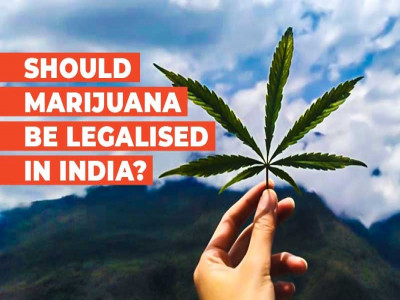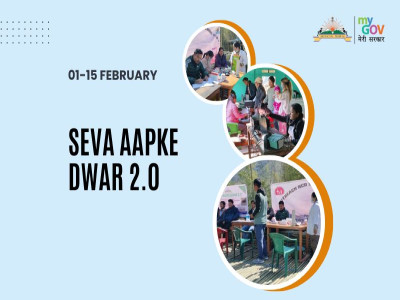
Death Threats in the Line of Duty
"Gauri Lankesh was Anti-Hindu, had to be Killed," confessed KT Naveen Kumar the man who was arrested in the murder case of senior journalist Gauri Lankesh back in 2017, Bengaluru.
Lankesh’s killing is just one example of the long list of atrocities committed against Journalists or media persons in India.
India was placed 142nd out of 180 countries in the 2021 “Reporters Without Borders Press Freedom Index,” a ranking that contradicts India's image as the world's largest populous democracy.
Dispelling Myths about Free Speech & Independent Thinking
Journalists have never been entirely safe in India — 11 have been killed since 2010, according to the CPJ. Most were working outside major cities, often covering small-town corruption when they were killed.
The fact that journalists in major cities like New Delhi are now being hounded is relatively novel, after years during which they operated largely without fear of retribution thanks in part to the nation’s educated, urban elite and the foreign media bearing noisy witness.
In such a climate, it is becoming more difficult for journalists to cover the country’s heated debates about whether people should be allowed to criticize the government, empathize with convicted terrorists, eat beef or make jokes about Hindu gods. Under Indian law, it is illegal to inflame communal tension or stoke violence. Prosecutors are increasingly applying that ban to anything deemed anti-Indian, though they have not targeted journalists.
The apparent increase in harassment, meanwhile, may be a sign of the times. India’s enormous population of 1.25 billion is also the world’s fastest-growing market for both Internet penetration and smartphone use. Interacting online is something new and exciting for long-isolated populations.
The deaths are the latest in a disturbing trend of journalists meeting a frightening end while performing their duties in speaking truth to power.
The frequency in which journalists are being attacked, especially in rural India, also begs the question of why there are no safety mechanisms to protect them.
The Community to Protect Journalists (CPJ) ranks India 13th in its global impunity index, which highlights countries where the murders of journalists are least likely to be punished. The organization claims not a single journalist's murder in the country has been solved in the past 10 years.
Crimes against Journalists- A Never-ending Saga
Since 2015, as many as 142 attacks against journalists have been registered in rural India, according to the latest data available with the National Crime Records Bureau. As many as 70 journalists were killed in India between 1992 and 2016. Many of them were independent journalists who were murdered close to their home or their workplace.
Many attacks on journalists go unreported, as reporters often succumb to threats from local politicians, policemen, and self-appointed vigilantes.
The gunning down of high-profile journalist Gauri Lankesh in Bangalore, in 2017 reignited the debate over freedom of the press and freedom of speech in India. It demonstrated that the killing and intimidation of journalists was not limited to one regime or region.
But despite public outrage, nothing has changed since then.
Soon after Lankesh's murder, journalist Sajeev Gopalan was allegedly roughed up by police in front of his wife and daughter in the southern state of Kerala after he had reported unfavourably about them.
In another incident, Sudip Dutta Bhaumik, an investigative reporter at the Bengali-language daily Syandan Patrika, was shot dead in the northeastern state of Tripura. Another young TV reporter, Santanu Bhowmik, known for leftist leanings, was allegedly killed in an attack by tribal party cadres.
A few years ago, Somaru Nag and Santosh Yadav, both journalists who work for local newspapers were booked for sedition because police alleged that they worked as couriers for Maoists and published stories in their favour. Yadav had to spend 18 months in jail before he was released.
Journalists are routinely targeted like in the case of Kamran Yusuf, a photojournalist from Kashmir, who was released on bail this month after spending more than six months in jail on charges of "waging war against India" and "stone throwing." The International Federation of Journalists in a recent statement said journalists covering Kashmir have "walked the razor's edge," working under threats and intimidation from various actors in the conflict.
Besides journalists, people who use potent transparency laws to expose corruption have been targeted. More than 15 whistle-blowers have been murdered and countless others attacked in the past three years. This has brought into sharp focus the obstacles hindering the successful implementation of India's landmark Right to Information Act, which is supposed to expose corruption in the government.
For years, reporters and editors have faced harassment, coercion, and threats from vested interests in the government as well as private ones. A number of them have even been killed for performing their duty or voicing an opinion. No wonder India is the third-most dangerous place to be a journalist, behind war-torn Iraq and Syria.
Recently, the International Federation of Journalists (IFJ) expressed its concern over attempts to silence the freedom of the press in India.
“The increasing number of attacks on journalists and media in India is a serious threat to independent journalism in the country. The IFJ urges the Indian authorities to act immediately to ensure the safety of journalists and media; and speedy investigation and prosecution in crimes against journalists to ensure such incidents are not repeated,” stated a release from IFJ.
The media is often referred to as the fourth pillar of democracy as it plays the vital role of a watchdog. Therefore, any attack on its representatives is an attack on democracy and the right to freedom of expression and information.
Final Thoughts- Protecting the “Messenger” at any cost
Attacks on journalists are common the world over and they continue to remain targets of those having vested interests in the issues they highlight. It is indeed worrying to see that the attacks on members of the media seem to be increasing both in frequency and brutality.
Not surprisingly, 41% of journalists killed were covering politics and 29% were covering corruption. This means, 70% of the total journalist killed were covering either politics or corruption. In most cases, one coincided with the other.
While 24% covered Business and Culture-related issues, 18% were concerned about Human Rights situations. About 15% covered crime. Moreover, 3% lost their lives covering the war.
The high percentage of journalists losing their lives while covering politics and corruption reflects poorly on the law & order situation. Poor rates of prosecution and prolonged delays in trials have only helped those in power to believe that they can remain above the law.
It is the state’s responsibility to ensure that our fourth estate continues to remain safe and protected so that it can carry out its role without fear or favour. The messenger must be protected, at any cost.
Disclaimer: The opinions expressed in this article are those of the author's. They do not purport to reflect the opinions or views of The Critical Script or its editor.

Newsletter!!!
Subscribe to our weekly Newsletter and stay tuned.

















Related Comments